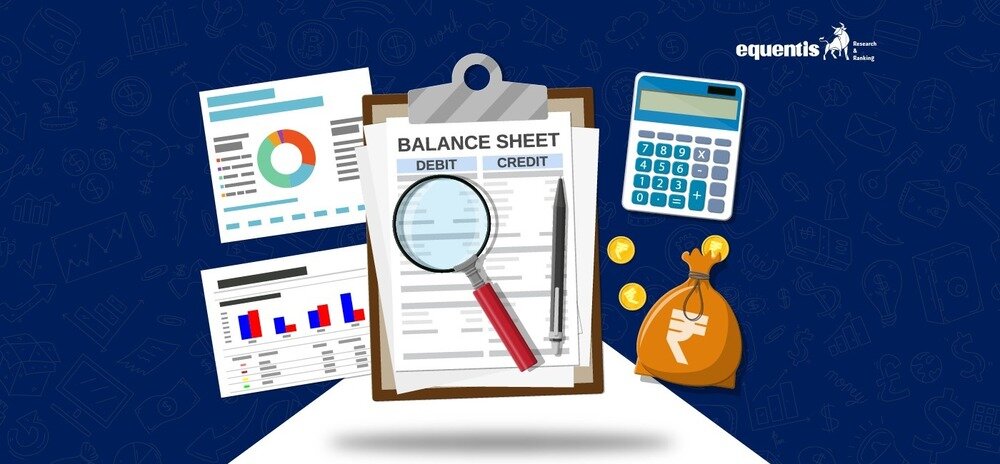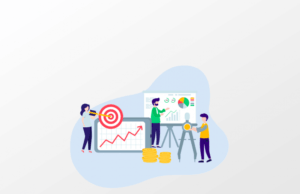If you are new to investments and the stock market, you may have questions like what equity is, what a balance sheet is, what it indicates, etc.
In simple words, equity represents ownership in the company, and a balance sheet is a financial document that provides an overview of a company’s financial condition during a specific period. Understanding its components is essential for you as an investor looking to get a clear picture of a company’s financial position.
In this guide, we will break down the elements that comprise a balance sheet and provide an example to make it easier to understand.
Balance Sheet Meaning Explained
A balance sheet is a financial statement that provides an in-depth analysis of a company’s financial position at a specific time. It is one of the fundamental documents businesses, financial analysts, and investors use to assess a company’s financial health and stability.
Accountants and bookkeepers document daily financial transactions, manage financial records, and ensure accuracy in line with accounting standards. They gather necessary balance sheet preparation data covering assets, liabilities, and equity.
A company’s balance sheet reflects what it owns versus what it owes and the value remaining for its shareholders on a particular date.
Inclusions/ Components of a Balance Sheet
Any company’s balance sheet is primarily divided into two sections that must balance out with each other.
- Assets
This section lists the business’s assets, including everything related to the company’s monetary value. Assets are typically categorized into
- Current assets: Cash, cash equivalent, account receivables, marketable securities, prepaid expenses, stocks, inventory, and other liquid assets that can be converted into cash within a year.
- Non-current assets: Tangible and Intangible Property such as patent rights, copyrights, agreements, etc., and equipment that are longer-term investments.
- Equities and Liabilities
Shareholders’ equity, or owners’ equity, represents the remaining interest in the company’s assets after reducing liabilities. Liabilities represent the company’s debts or obligations that need to be paid off to creditors. They are also divided into
- Current liabilities: Those payable within a year.
- Long-term liabilities: Those that are due beyond a year.
Importance and Limitations of a Balance Sheet
What Are the Benefits and Uses of a Balance Sheet?
- Financial Position: The company balance sheet shows what a company owns and owes, providing a clear picture of its net worth at a specific date. This information is crucial for assessing the company’s financial stability. Examining a company’s financials can be beneficial if you seek growth equity investing opportunities.
- Investment Decision Making: As an investor, you can use a company’s balance sheet to determine its financial health and evaluate whether it can be considered a long-term investment stock option. This helps you evaluate the risk and potential return on your investments. However, you can always get guidance from an expert SEBI-registered investment advisory firm for investment purposes.
- Liquidity Analysis: By examining a company’s balance sheet, you can assess how easily it can convert its assets into cash to meet short-term obligations. This liquidity analysis is vital to understanding the company’s ability to continue operations without financial distress.
- Credit Analysis: You can analyze a company’s balance sheet to determine its creditworthiness. A strong balance sheet means a lower risk of default, making the company more reliable.
What Are the Constraints of Using a Balance Sheet?
- Valuation Challenges: The subjective valuation of certain assets and the estimation of liabilities on the balance sheet can complicate their precise assessment. This may lead to inaccurate financial statements.
- Static View of Period: The balance sheet represents a company’s financial position at a specific moment. This static view does not capture fluctuations or trends in the company’s financial status over time, which could provide more insightful information about its health and prospects.
How to Read a Balance Sheet?
To read a balance sheet, understand its components: assets, liabilities, and equity. Assets are divided into current, which can be converted into cash within a year, and long-term, such as property and equipment. Next, review liabilities, categorized into current and long-term debts due within a year. Equity represents the shareholder value after liabilities are subtracted from assets.
The Balance Sheet Formula
Total Assets = Total Liabilities + Shareholders’ Equity
This equation, known as the accounting equation, reflects the concept that a company must pay for all it owns (assets) either by borrowing (liabilities) or through investment by the owners (shareholders’ equity).
How to Prepare a Balance Sheet?
If you are a business owner, here are quick steps to prepare a balance sheet.
- Collect all necessary financial information. This data usually comes from your accounting records, like the general ledger, where all transactions are recorded.
- Divide your assets into current (short-term) and non-current (long-term) categories. Similarly, separate your liabilities into current liabilities (due within one year) and long-term liabilities (due after one year).
- Calculate the totals for current and non-current assets and current and long-term liabilities, and sum these up to find your total assets and liabilities.
- Review your balance sheet for accuracy and completeness. You can finalize it once you’re confident in its accuracy and completeness.
Special Considerations in Balance Sheet
- Asset Valuation: Apply consistent valuation methods for assets, especially intangibles.
- Classification: Correctly classify assets and liabilities as current or non-current.
- Liabilities Recognition: Include all known and estimable liabilities.
- Lease Accounting: Properly distinguish between capital and operating leases.
- Foreign Currency: Convert foreign currency items accurately, considering exchange rate fluctuations.
Balance Sheet Example
Consider the business XYZ Ltd. Following are its Financial Details:
- Cash: ₹50,000
- Accounts Receivable: ₹30,000
- Inventory: ₹20,000
- Equipment (net of depreciation): ₹100,000
- Accounts Payable: ₹25,000
- Long-term Loan: ₹70,000
- Common Stock: ₹50,000
- Retained Earnings: ₹55,000
Below is the balance sheet example for the financial year-end of the business:
| Balance sheet as at Year End | |||||
| Liabilities and Shareholders’ Equity | Asset | ||||
| Particulars | Amount | Amount | Particulars | Amount | Amount |
| Shareholders’ Equity: | Current Assets: | ||||
| Common Stock | ₹50,000 | Cash | ₹50,000 | ||
| Retained Earnings | ₹55,000 | Accounts Receivable | ₹30,000 | ||
| Total Shareholders’ Equity | ₹1,05,000 | Inventory | ₹20,000 | ||
| Liabilities: | Total Current Assets | ₹1,00,000 | |||
| Current Liabilities: | Non-current Assets: | ||||
| Accounts Payable | ₹25,000 | Equipment (net of depreciation) | ₹100,000 | ||
| Total Current Liabilities | ₹25,000 | Total Non-current Assets | ₹1,00,000 | ||
| Long-term Liabilities: | |||||
| Long-term Loan | ₹70,000 | ||||
| Total Long-term Liabilities | ₹70,000 | ||||
| Total | ₹2,00,000 | Total | ₹2,00,000 | ||
Conclusion
The balance sheet is a vital financial statement that provides a snapshot of a company’s financial standing at a particular moment. By comparing balance sheets over consecutive periods, you can gauge the effectiveness of the company’s financial policies and strategies, enabling better financial planning and risk management.
Moreover, consider taking guidance from a SEBI-registered investment advisory firm to make a better-informed investment decision.
FAQ
What is the Equity of the Owner in the Balance Sheet?
Owner’s equity indicates the amount that would be returned to shareholders if all assets were liquidated and all debts paid off.
How often are balance sheets prepared?
Balance sheets are typically prepared at the end of an accounting period, whether monthly, quarterly, or annually, depending on the company’s reporting requirements.
What does negative shareholders’ equity indicate?
Negative shareholders’ equity indicates that liabilities exceed assets, a potential sign of financial distress.
What are the main components of a balance sheet?
Assets, Liabilities, and Shareholders’ Equity, collectively governed by the accounting equation.
How do I analyze a company’s balance sheet?
Use ratios, compare trends, evaluate debt levels, and examine equity health. Look for liquidity, solvency, and capital structure insights.
What ratios are important when reading a balance sheet?
Current Ratio, Quick Ratio, Debt-to-Equity, Return on Equity (ROE), and Working Capital Ratio.
Is the balance sheet the most important financial statement?
It is essential, but for complete understanding, it should be read alongside the income and cash flow statements.
Can I assess company performance just by its balance sheet?
No, it shows financial health at a point in time. Combine it with other financial statements for a holistic view.
How useful was this post?
Click on a star to rate it!
Average rating 0 / 5. Vote count: 0
No votes so far! Be the first to rate this post.
I’m Archana R. Chettiar, an experienced content creator with
an affinity for writing on personal finance and other financial content. I
love to write on equity investing, retirement, managing money, and more.
- Archana Chettiar













